Can you start by telling us about your background, Melanie?
My mother is English, my father was Spanish, hence my surname. I was born in Erith, Kent, and I grew up living with my Mother and Grandparents in Welling, Kent. My Grandmother was extremely creative, a very skilful dressmaker and watercolour artist. She taught me so many crafts – knitting, crochet, sewing, embroidery etc. and definitely instilled the impetus and desire to create. Gran used to get her housework done in the morning and then, in the afternoon, she would set out two sewing machines, her own and her mother’s, side by side. She would give me scraps of materials and, whilst she made clothes for the family on her Bernina, I would sit next to her and make clothes for my dolls on Great Grandma’s machine. It had a wonderful bone, cranking handle, mother of pearl inlay on the body of the machine and a pretty tape measure in the marquetry of the wooden base. There was even a treadle if you didn’t want to crank the handle, but my legs weren’t long enough to reach it! I think I find enormous peace and comfort when I’m making or creating, and am probably transported back to those times when we sat together. Maybe as a consequence, I can never sit and do absolutely nothing; I always have to be doing something with my hands. I get comments like “Why don’t you just relax?” but that is my way of relaxing, and actually find it stressful not doing it.
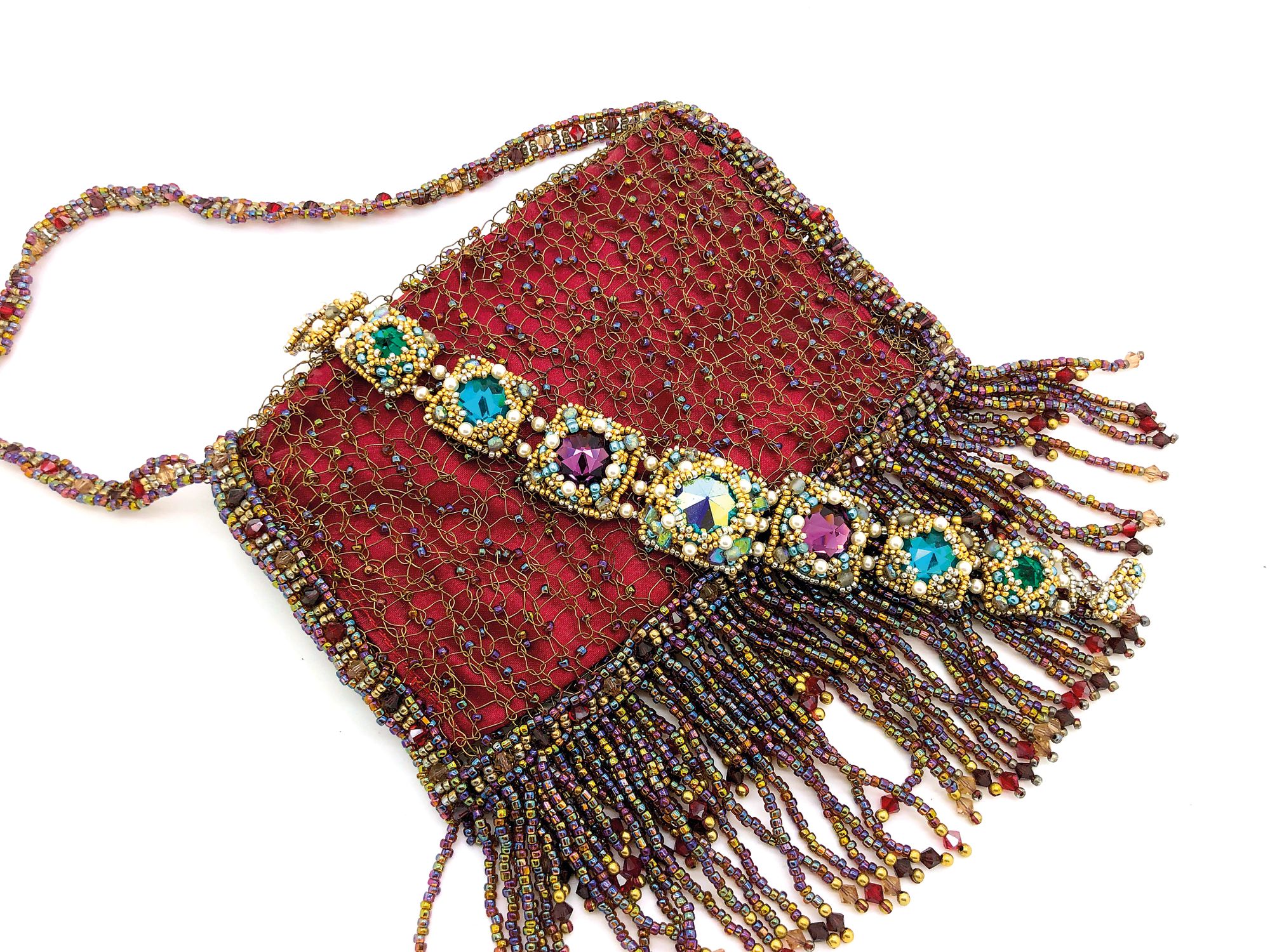
What’s your current situation?
I love having a big family, as I was an only child, and always resolved to have a busy, bustley household – which it always is, like Piccadilly Circus! Steve and I have 3 children - a son and two daughters. Our youngest daughter and granddaughter now live at home with us, along with our cats, Jack and Charlie. We often do family Sunday lunches where the whole family gather together – I love these times. Never a dull moment!
Steve and I run our family roofing and building business – I do all the administrative stuff, paperwork, bookkeeping, accounting and wages. I used to work for a large pharmaceutical company and when I met Steve, I began helping him with his accounts in my spare time. I left my job as our family and the business grew, and we created an office at home where I spend most of my time.
It always makes me laugh when I’m teaching and students ask if beadwork is my job. I wish it were – that would be bliss. I would love to spend time designing and beading, but the truth is that I bead whenever I can, usually at night when all is quiet. Generally when I’m traveling, say, up to London, I have a ‘grab’ project which I can pop into my bag and happily work at on the train.
What materials/technique etc do you commonly use in your work? Do you specialise in one area or work in multiple?
I tend to mix off-loom beading techniques a lot in my work. I feel the best way I can describe what I do is ‘engineering’ with the beads. There is something deeply mathematical, as well as beautiful, about the way beads take up their positions in relation to one another. For me, I am more of a seed bead lover as opposed to cylinder beads, because they are softly rounded, consequently they have a lighter connection which is more lacy, more delicate and much more manoeuvrable. I love working an intricate piece, and the tinier the beads, the better. I find I can produce so much detail with size 15o Czech Charlotte beads and try to work with them as much as possible. I am also obsessed with crystal cabochons, particularly flatbacked ones, and relish the process of beading around them using as little beadwork as possible, so as not to overwhelm them. I’ve taken great delight in developing minimal beadwork around crystals, and actually being able to see the crisp edges once they’re beaded. To do this, I often re-visit a UFO or experimental piece and find that I can strip away some of the beading steps, yet still trap the crystal firmly.
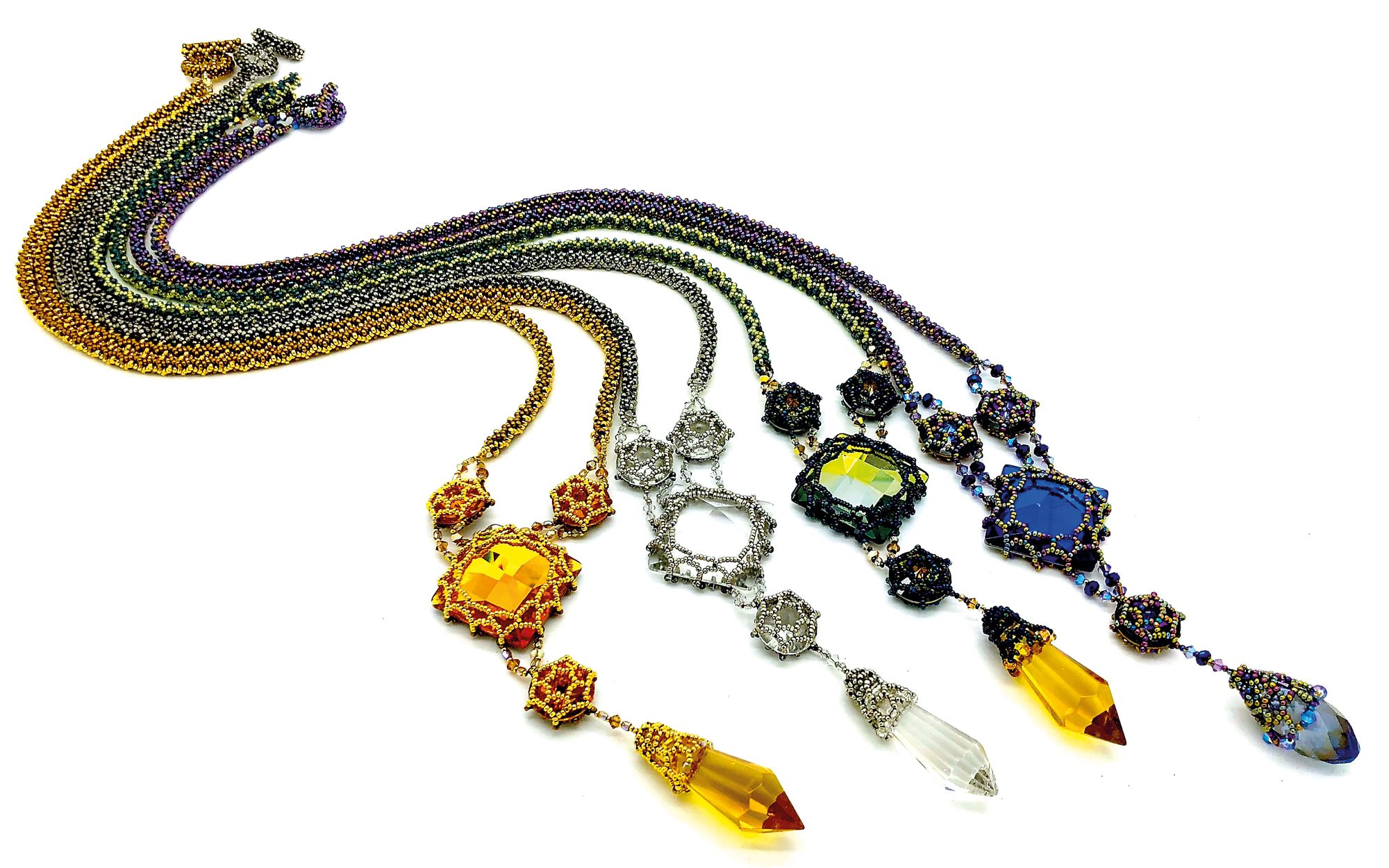
Have you formally studied any relevant courses?
The summer of my 10th birthday, I was on holiday with my mother in the Greek island of Mykonos, and an islander showed me how to weave with beads on a loom her husband had made for her, from driftwood, and a warp of embroidery threads. I became completely engrossed in beadweaving during that holiday and my mother promised to buy me a loom when we got home - true to her word, I got one that Christmas.
So my love of beads definitely began in my childhood, but I think I picked up beading techniques in my teens; I didn’t realise it but I was teaching myself the various beading stitches by following thread paths and mending damaged, antique beaded collars and cuffs, bags and jewellery I had bought in antique fairs and flea markets. I had no idea what the stitches were called and didn’t even know they had names!
Beadwork and crafts took a back seat whilst I studied Biochemistry and Pharmacology, going on to work for a pharmaceutical company. Once the children were a little older I took a teaching degree so that I could spend holiday times with them, and I began teaching Science at a local Secondary school. However, I was always so busy with all my teaching duties that I found myself more and more detached from the family, and there was never any ‘me’ time to even pick up a needle and thread. So I eventually quit and reverted back to being ‘office lady’, which was actually a huge relief both to me and my family!
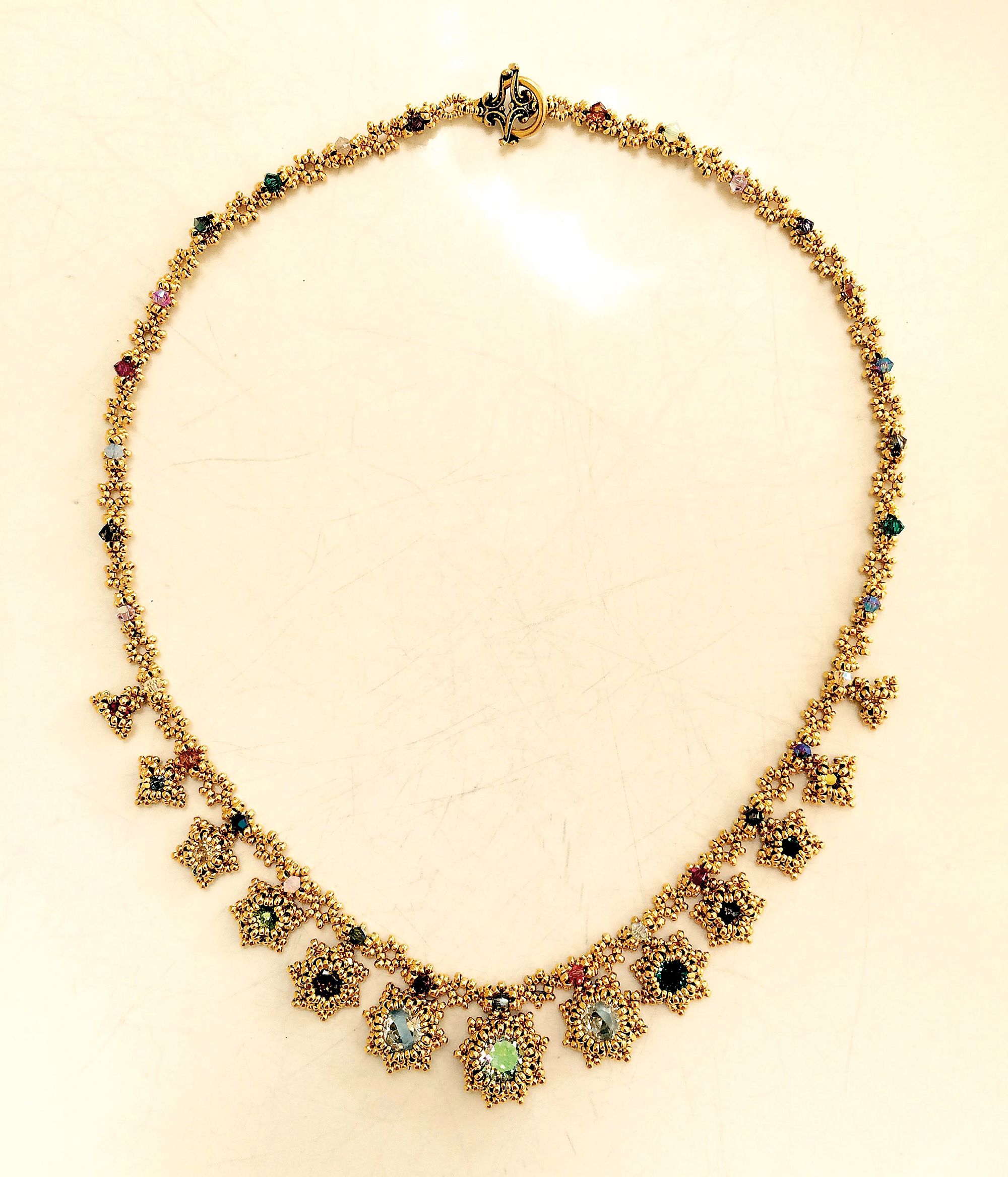
I joined the Beadworkers Guild in 1999 at the Great British Bead Show, and took a class in freeform Brick Stitch with Ann Mockford, who was a great teacher, and I was really surprised when I realised I knew the stitch. The next day I took a class in freeform Peyote, and realised I was familiar with that stitch too! At some point people at the show saw pieces I had made and made and asked me to teach at the next show, and so it began. I was really excited and absolutely fired up for action, but rather scared that I would never be able to remember the names of all those beading stitches!
What are your masterpieces or pieces that you are most proud of? Is there anything you do that’s ‘uniquely you’ or that you’re specially known for?
The Beadworkers Guild was approaching its 10th anniversary and I was asked to design something based around a donut stone, for the Journal supplement. My donut stone was oval and I turned it into the body of a fish, added a luscious tail and suspended him from a necklace of beady fishtails. Gorgeous Giorgio was a real precision piece, and I’m very proud of him. Unbeknownst to me, the process of making him was the foundation for a new genre of beadwork for me, as it helped me to start thinking outside the box.
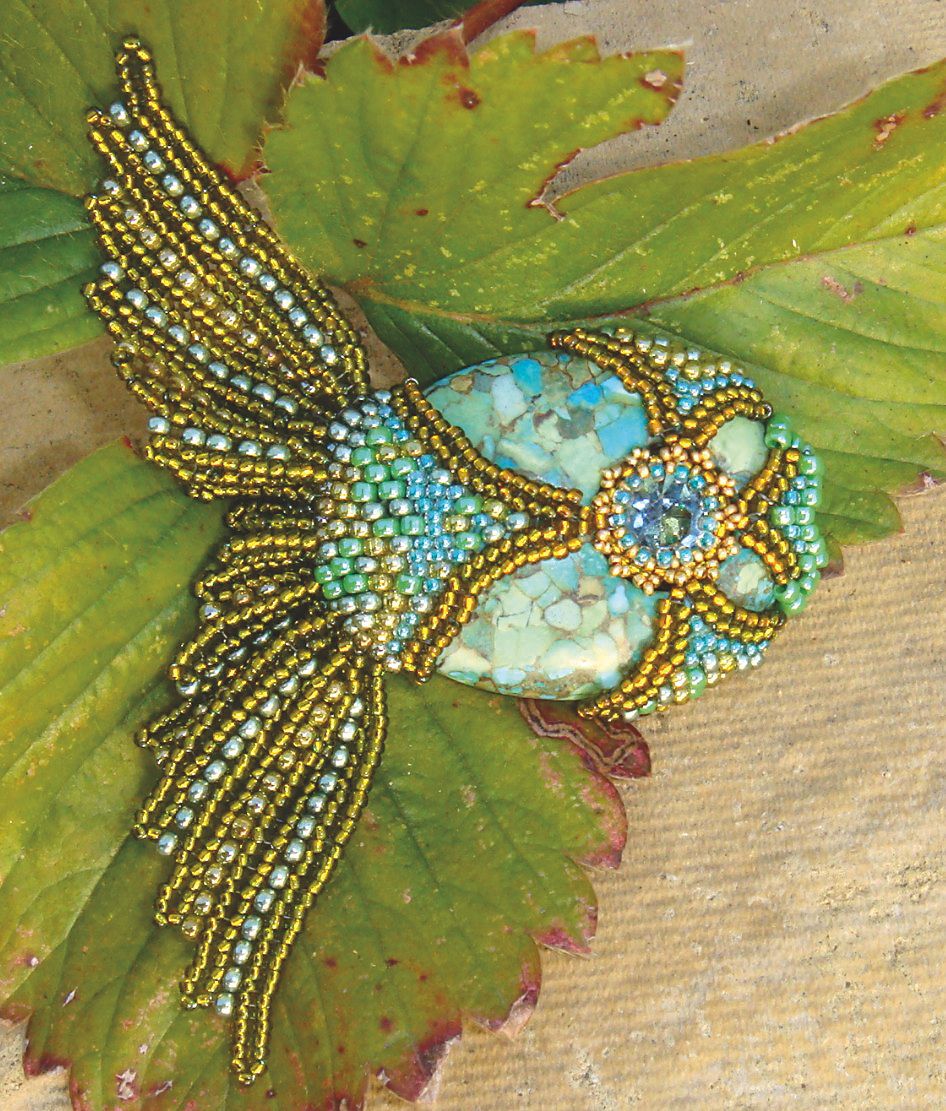
My pride and joy has to be Hubble stitch, which I guess is uniquely me. As beaders, the range of techniques we have at our fingertips gives us a whole universe of possibilities to produce incredibly beautiful artifacts, so to have added another technique to our beady universe has given me great pleasure. On planet Hubble, as I call it, there is an entire world of further permutations and combinations, yet to be explored, and I am looking forward to the lovely textiles and creations that will come of it!
Other designers, such as, Marcia DeCoster, Sabine Lippert and Helena Tang Lim have all incorporated Hubble stitch into their designs, which is thrilling for me, as they have seen its potential and explored it.
If I’m known for anything it’s probably my minimal bezeling around flat-backed cabochons. Oh yeah, and I’m generally known as the Charlotte queen for obvious reasons!
Which beads do you prefer to use?
I adore seed beads and use them as my main medium in conjunction with crystal beads and cabochons. Generally I tend to steer away from shaped beads and many findings, and because of this, I have been told I’m a beady purist - in the nicest possible way, and I accept that proudly. I think we still have plenty of scope for designing andcreating with the simple, elegant and very versatile seed bead.
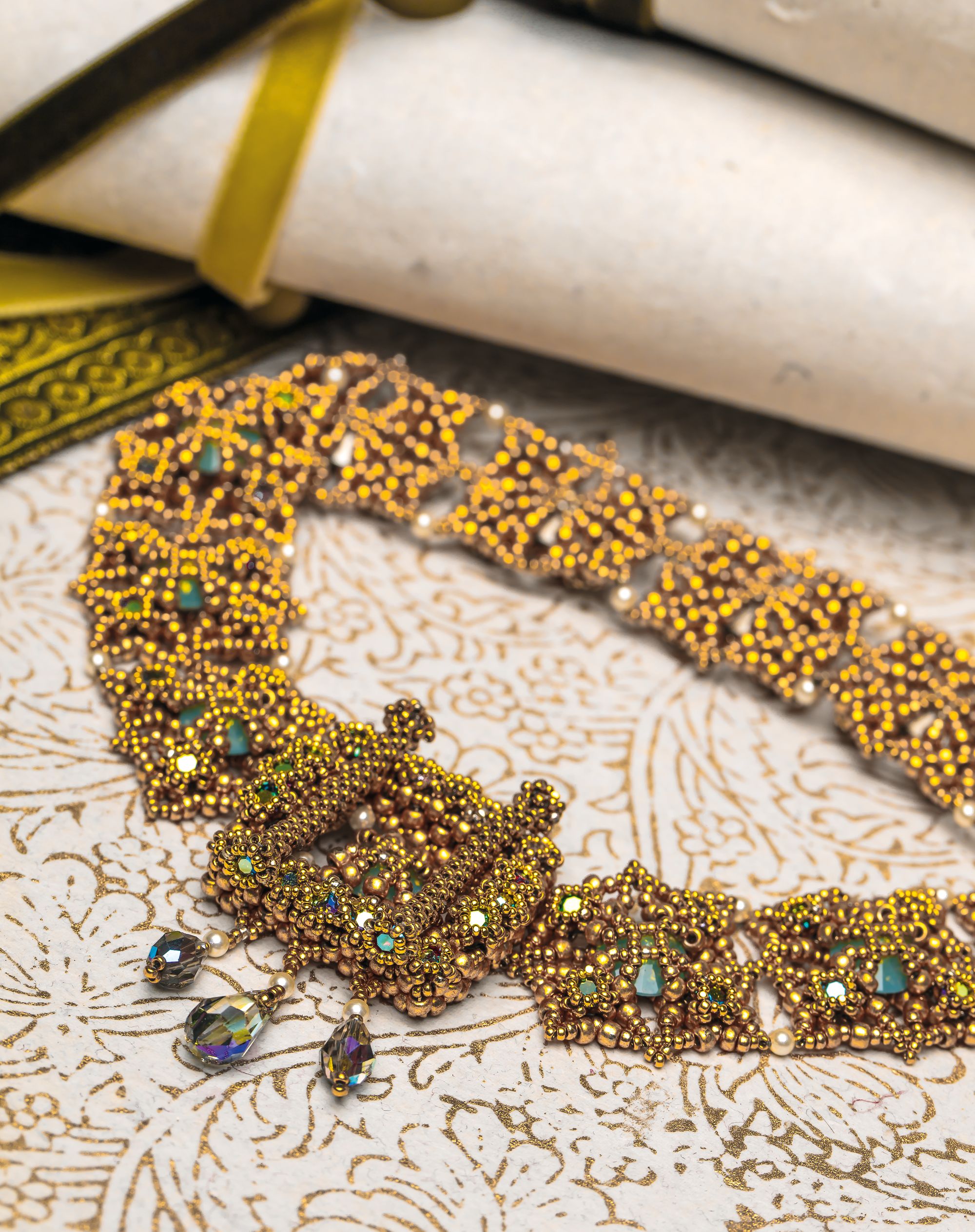
Where do you get your ideas?
In recent years I seem to have been taking inspiration from periods in history - Mediaeval, Byzantine, Renaissance and particularly Tudor and Elizabethan eras, because these influences really have been flowing into my designs. But I must say that I also find it impossible not to take inspiration from everything around me – the colours of nature (flora and fauna), our physical environment, rock formations, architecture, microscopic creatures, molecular structures and chemical bonds. It’s all there for the taking!
When I see something that is beautiful and shouts out to be translated into beadwork, I really enjoy imagining which bead stitch or stitches would best represent it, and my brain starts working on it straight away. It can be really annoying because, when I get a bee in my bonnet about a design, I generally can’t sleep, and just lie there making the piece in my head all night!
The Isabella necklace and Lorenzo bracelet will always have a special place in my heart. Both designs were inspired during a trip to Florence; I was fascinated by the Medici family – their style, palaces and collections. What’s more, part of the clasp and the fans between the crystal elements are responsible for guiding me towards the Eureka moment when I discovered Hubble stitch.
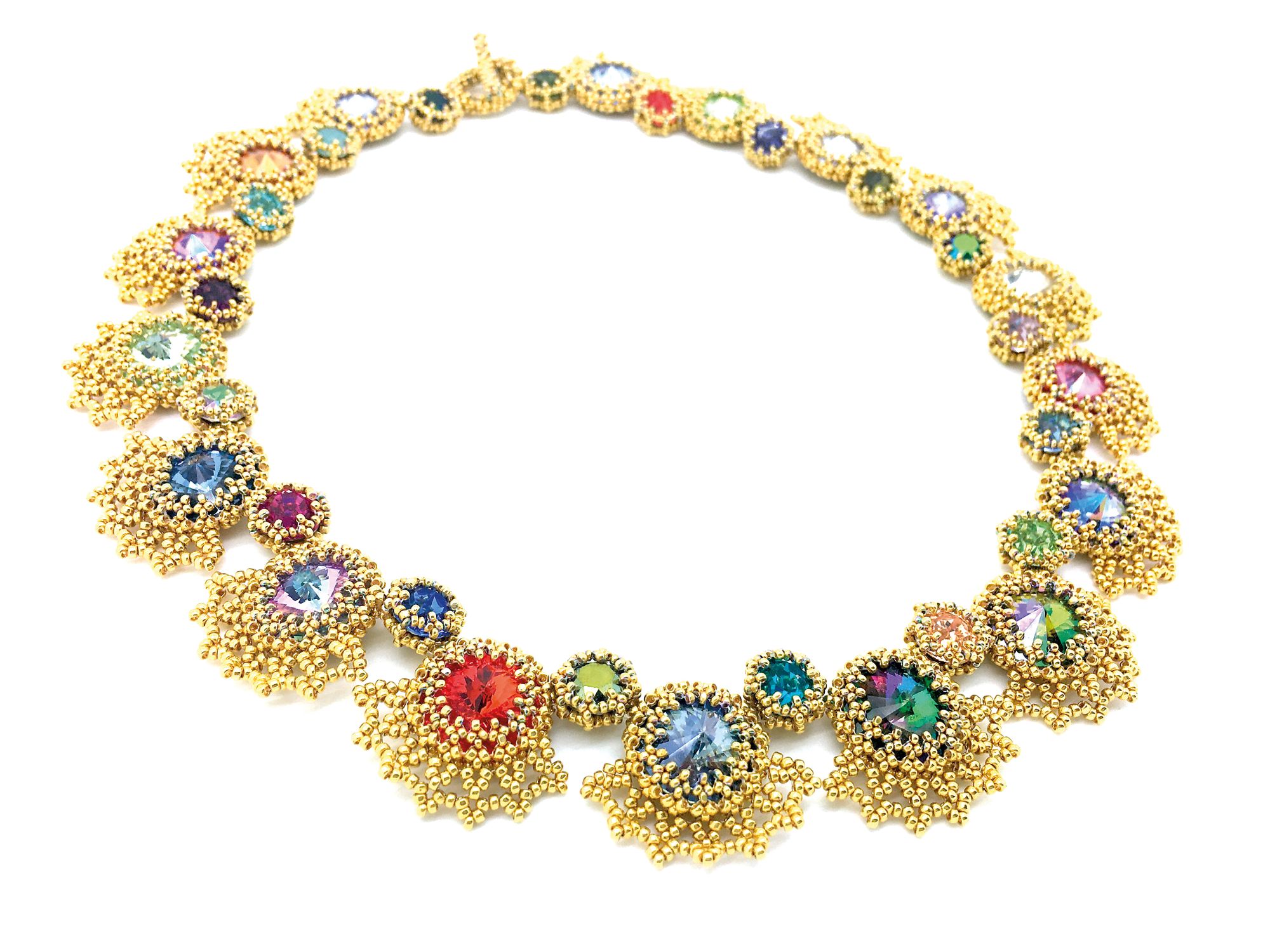
Currently my absolutely favourite piece has got to be The Maselli Carcanet, which I designed to teach at our Tudor Inspirations retreat alongside my lovely, beady pal Heather Kingsley-Heath. It was totally inspired by the wonderful, delicate chains of elements found in the Cheapside Hoard.
Where do you teach?
I teach my designs at bead shops, craft and bead shows, bead groups and weekend retreats internationally, and have been teaching since 1999.
I regard teaching beadwork as a real privilege – it’s so enjoyable, particularly
that ‘light bulb’ moment when students ‘get it’ and then when the ‘what if...’ mo-
ments start flowing. Those discussions are great. Workshops are wonderful – they’re not just a learning experience limited to what the teacher brings to the table; so much information and inspiration is exchanged between everybody throughout the day. Teaching at a retreat is even more of a fun experience because it removes time restraints and I see students relax in the classroom, which really allows them to spread their creative wings. It’s also a great bonding exercise socializing with one another, whilst sharing our common love for beads.
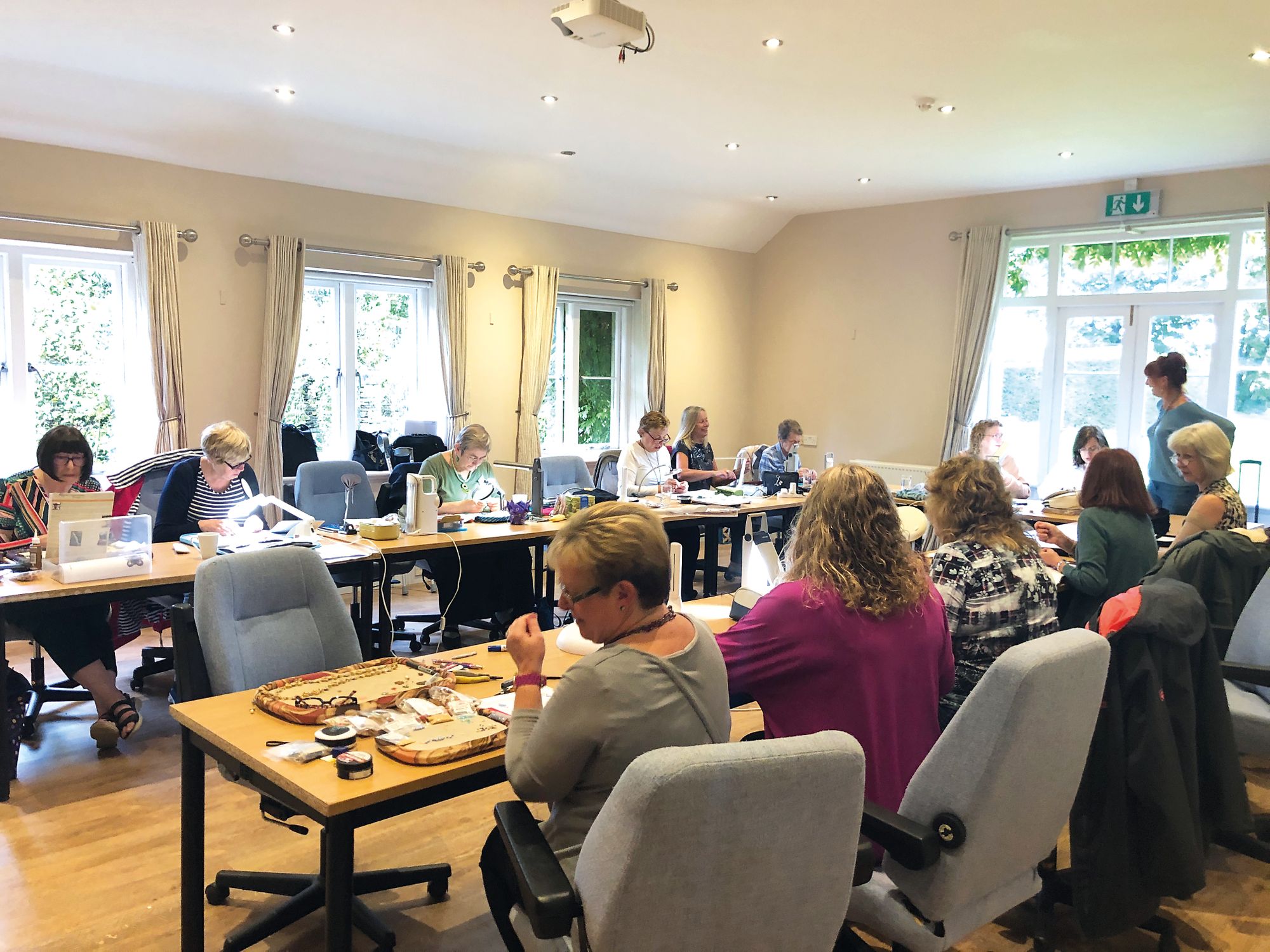
I learnt a long while ago that when I make something, I have to write down what I’ve done, and take photographs at all stages, because if I get asked to teach it, then at least I have a record of how I made it. It’s often the case that when I repeat a design, I find that I can approach it differently, with the same result or better, and make it more easily and efficiently. The knock on effect is that this makes it easier to produce the pattern and teach.
Every year of writing new patterns I try to tweak my wording and graphic techniques. One of the most interesting changes I made several years ago, was that alongside the ‘do this’ and ‘do that‘ steps, I began to add little ‘asides’, which are meant to be me talking directly to the reader; they are little tips and reality checks. I often get fun feedback from students about them, saying they actually hear me talking to them through these asides and that they really help.
I have also made videos for my Beadschool channel on YouTube. The idea behind this is gradually to build a library of techniques, tips and tricks and information in order to help beadworkers to expand their beading skills. It dawned on me some years ago that when I was first beading, I rarely wanted to actually wear the pieces I was making; I loved making them and conquering a technique, but simply cast them aside, enthusiastically moving on to the next challenge. The interesting thing is that I absolutely love wearing the pieces I make now; it’s because they are exactly the way I want them to be because I’ve got a toolbox full of techniques at my fingertips to apply to all my designs. I know I’ve still got lots to learn about beading – the learning process never stops, but understanding this about myself fueled my desire to start making thevideos. I lost my studio space for several years when our eldest daughter moved back after university, so I’m still working on sorting out a new video space.
Have you written any books, or are you working on any at the moment?
From the very first time my work appeared in a book or publication, it was, and will continue to be, a thrill to actually see it. The first time was an earring pattern in The Beadworkers Guild Earrings book and subsequently they have featured patterns in the quarterly Journal. Sandra Wallace featured my pieces in her book, The Beader’s Colour Mixing Directory. I’ve also had projects and articles about me published in multiple magazines.
One of the most amazing things in my life has been to become an author. Sometimes I still can’t quite believe I wrote that first book - Let’s Hubble! The real energy that drove me to write it was the fact that once I had worked on Hubble stitch and all the necessary, basic sub-techniques (feverishly – believe me), I then discovered Wave Hubble stitch – for me, this was even bigger than a Eureka moment! At that point, I knew I simply had to write that first book in order to write the second book – Hubble Stitch 2.
Our friendship and love of history and beadwork brought Heather and me
together in an almost inevitable writing partnership, resulting in our book Tudor Inspirations, of which we are enormously proud.
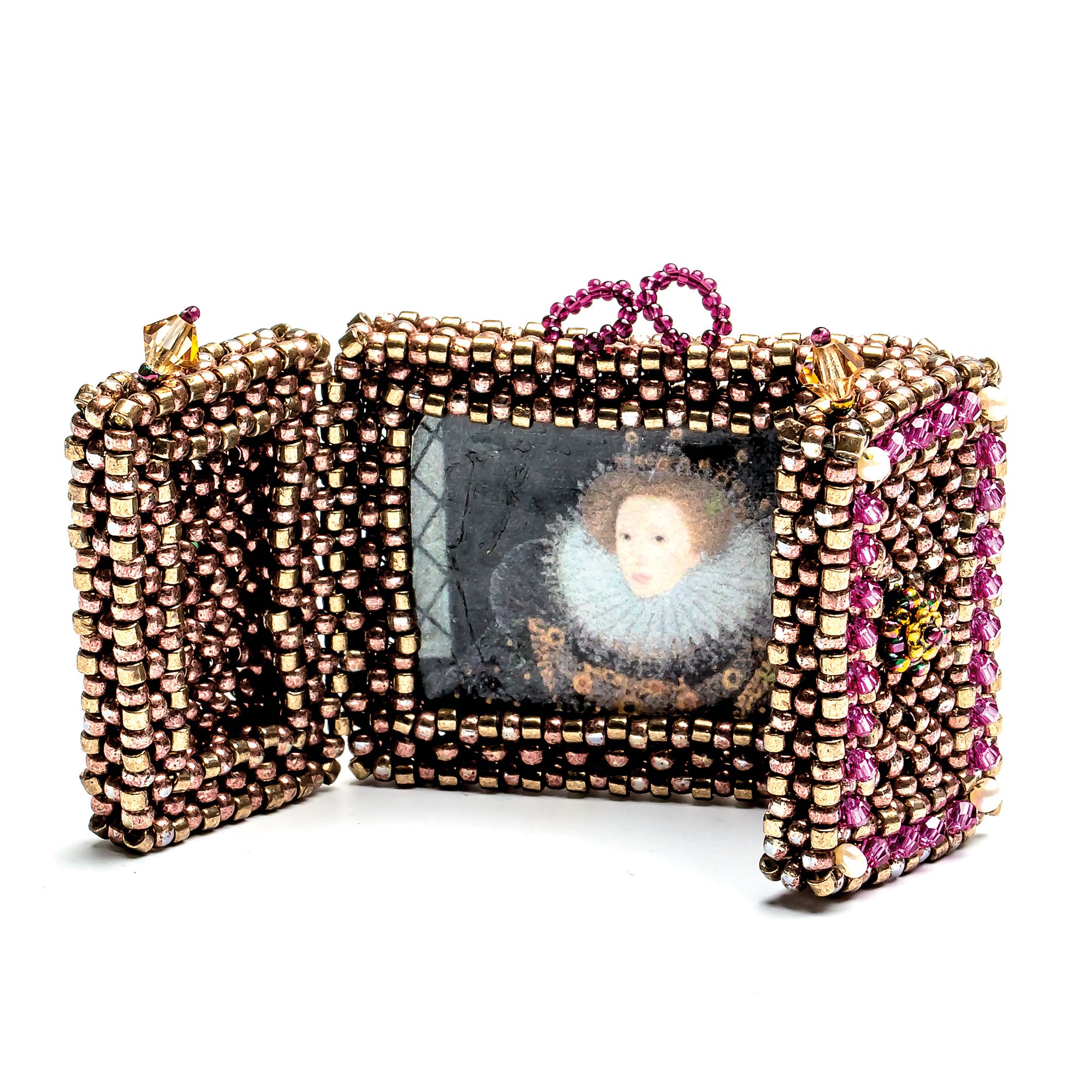
Can you describe your workspace?
We now have our office at the bottom of the garden, where I do all my admin and beadwork (except when I’m babysitting at night). It’s great because we have a lot of space there and my ever-expanding crystal and bead collection is easily accommodated. I like the fact that Steve often works on his marquetry in his workshop which adjoins the office, so we’re not isolated.
What are you working on at the moment? Any particular piece of work or exciting project?
I’m always playing catch up, writing patterns for designs, or making samples for kits and workshops. I would give anything for more time to just bead all these design ideas that are bursting to get out, but the family and our business always has to take priority. I’m currently working on samples of different colour ways for my latest piece – Renée. It’s a design for the 2020 Elemental Beading Retreats that Heather and I are running – the inspiration theme this year is the wonderful Art Deco era.
Since writing our book together and designing with a specific theme in mind, I found exploring Art Deco a truly exciting challenge. I hadn’t allowed my mind to go there before this, but the breadth and scope of the art, architecture, furnishings and, of course, jewellery of this era is a whole world of inspiration, and I have had so much fun in the design process.
Do you have any goals related to you beadwork that you would like to see become a reality within the next 5 years?
I am really excited about our retreats, both here in the UK and overseas, and the future eras and design styles I want to explore. In the thought processes I went through when designing Renée, I explored a number of other designs so I think I’ll have my hands full with Art Deco for quite a while.
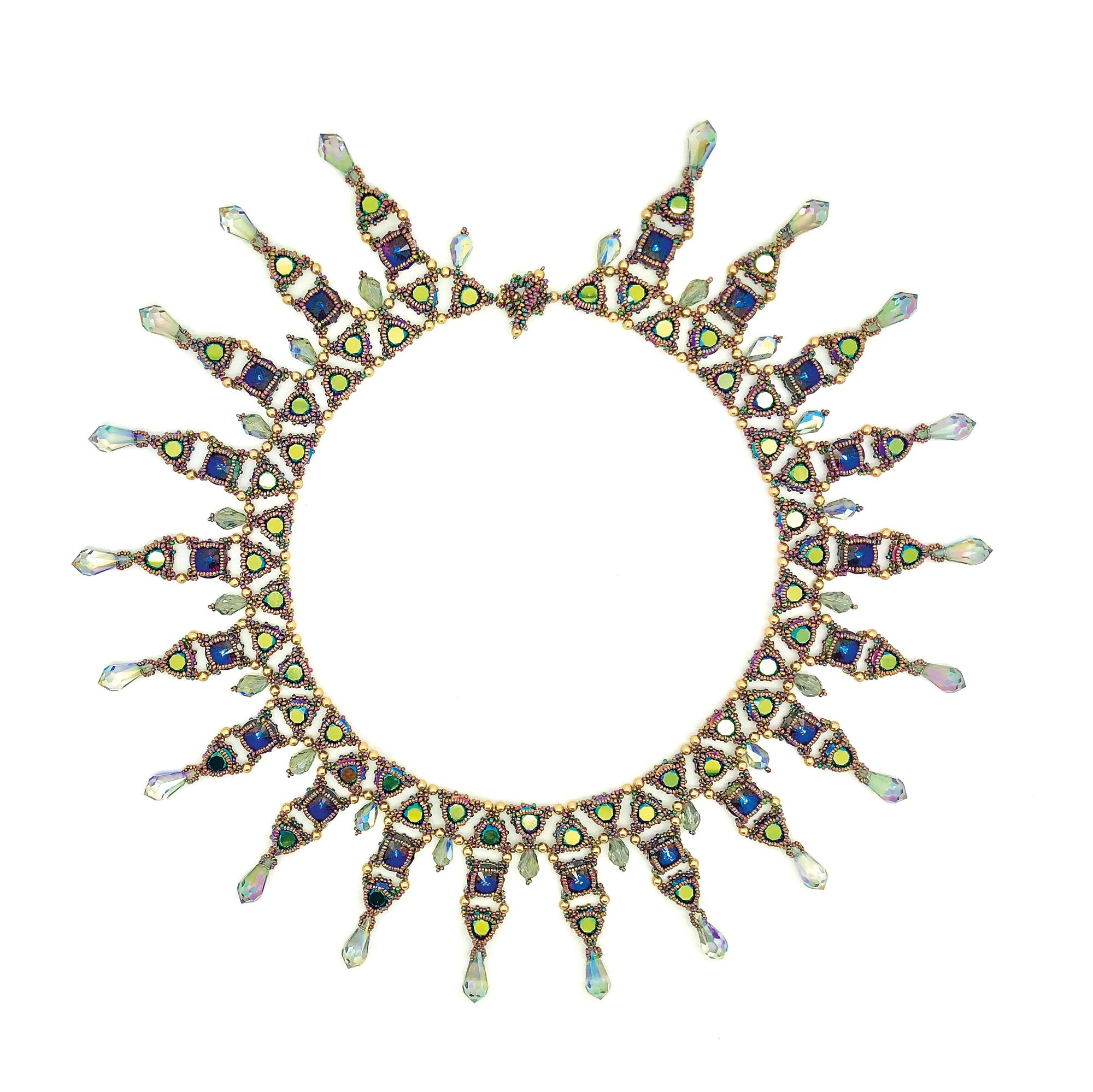
What have been your biggest personal (not necessarily bead or jewellery related) challenges, and accomplishments?
Without a shadow of doubt, my family has been my biggest personal achievement, challenge and accomplishment. I’m enormously proud of all of them, and I know that without them, I wouldn’t be the person I am today. Yes, I may be marginally insane, manic and a virtual insomniac, but it has all been worth it!
Anything else you wish to share that might be of interest, or inspiration for
any bead makers, beaders or jewellerymakers?
How often do we go to bead shows and find a beautiful stone or crystal cabochon? It’s very much a beadworker’s thing to start imagining how it would look incorporated into some sort of beady piece. I bet that many of those beautiful cabs were bought, but are now lying in stashes, waiting to be beaded. Why not get them out and start experimenting with them? Think about how much of the beauty of the cab you would lose or preserve if you worked in one technique or another or a combination of techniques.
Start at the back of the cab and work towards the outermost edge, then you will have some key points from which to work over the front and trap it. Dare to explore and have fun!
BEADLINK: www.beadschool.co.uk


